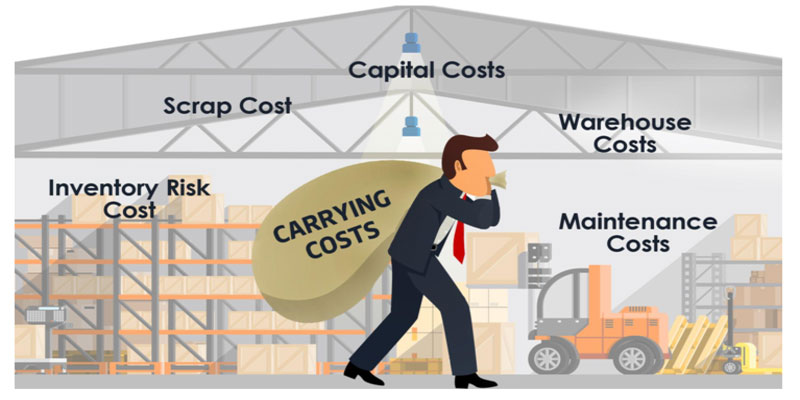Difference between 457 Plan and 403(b) Plan
May 26, 2025 By Kelly Walker
Regarding retirement savings plans, there are two primary options available to most employees: 457 plans and 403(b) plans. These plans are designed to help individuals save money for their retirement years but differ in some important ways. In this article, we'll take a closer look at the differences between 457 plans and 403(b) plans so that you can better understand which one might be right for you.
457 Plan
A 457 retirement savings plan is available to employees of state and local governments, as well as certain non-governmental organizations. This type of plan is named after the tax code section that governs it. There are two types of 457 plans: 457(b) and 457(f).
457(b) Plans
457(b) plans are the more common type of 457 plan. These plans are designed to help employees save money for retirement by allowing them to contribute a portion of their income pre-tax. The money in the plan grows tax-free until it is withdrawn. Withdrawals from 457(b) plans are taxed as ordinary income. One of the key benefits of 457(b) plans is that they have a higher contribution limit than many other retirement savings plans. In 2022, employees can contribute up to $20,500 to a 457(b) plan. For employees who are age 50 or older, there is an additional catch-up contribution of $6,500 per year, bringing the total contribution limit to $27,000.

457(f) Plans
457(f) plans, or nonqualified deferred compensation plans, are less common than 457(b) plans. These plans are typically offered to high-level executives and other highly compensated employees. Unlike 457(b) plans, 457(f) plans do not have a contribution limit. Instead, the employer decides how much money to contribute to the plan on behalf of the employee. The main disadvantage of 457(f) plans is that the money in the plan is not tax-deferred. Instead, it is subject to income tax in the year it is earned. This means that employees may face a higher tax burden in the year that they receive their compensation.
403(b) Plan
A 403(b) plan is a retirement savings plan available to employees of non-profit organizations, including schools, hospitals, and other charitable organizations. These plans are also sometimes referred to as tax-sheltered annuities or TSAs. Like 457 plans, 403(b) plans are named after the tax code section governing them. As 457(b) plans, 403(b) plans allow employees to contribute a portion of their income pre-tax. The money in the plan grows tax-free until it is withdrawn. Withdrawals from 403(b) plans are also taxed as ordinary income. One of the unique features of 403(b) plans is that they allow for elective deferrals and employer contributions. Employees can contribute up to $20,500 to their 403(b) plan in 2022. For employees who are age 50 or older, there is an additional catch-up contribution of $6,500 per year, bringing the total contribution limit to $27,000.
Differences Between 457 Plans and 403(b) Plans
While both 457 and 403(b) plans offer employees a way to save money for retirement, there are some key differences between the two types of plans.
Eligibility
One of the primary differences between 457 plans and 403(b) plans is who is eligible to participate. Four hundred fifty-seven plans are available to employees of state and local governments and certain non-governmental organizations. 403(b) plans, on the other hand, are available to employees of non-profit organizations, including schools, hospitals, and other charitable organizations.

Contribution Limits
Another key difference between 457 and 403(b) plans is the contribution limits. As mentioned, 457(b) plans have a higher contribution limit than 403(b) plans. In 2022, employees can contribute up to $20,500 to a 457(b) plan, compared to $19,500 for a 403(b) plan. For employees who are age 50 or older, there is an additional catch-up contribution of $6,500 per year for both types of plans.
Rollover Options
Finally, there are differences in the rollover options for 457 and 403(b) plans. Both types of plans allow participants to roll over their account balance to another retirement plan or IRA when they leave their job. However, the rules for rollovers can differ. One key difference is that 457 plans do not have the same restrictions on rollovers to IRAs that 403(b) plans have. In general, 403(b) plan participants are limited to rolling over their plan assets to another 403(b) plan or to an IRA that is set up specifically to receive 403(b) plan assets. In contrast, 457 plan participants can generally roll over their plan assets to any eligible retirement plan, including an IRA.
Conclusion
Eligibility is limited for both types of plans but in different ways. Four hundred fifty-seven plans are available only to state and local government employees and certain non-governmental organizations. 403(b) plans are available to employees of non-profit organizations, including schools, hospitals, and other charitable organizations. Depending on one's profession, one plan may be available, and the other may not.

Ways to Make Walmart Credit Card Payment

Municipal Bonds vs. Taxable Bonds and CDs: How Do They Compare?

How Much Does Inventory Carrying Cost?

What is Student Loan Bankruptcy

Impact of Basel III rules on bank investment

Teaching your kids about financial literacy doesn't have to be boring. Here are some creative ways to use games to make learning fun for your children.

Difference between 457 Plan and 403(b) Plan

Easiest Credit Card to Get Approved for

Best Wells Fargo Credit Cards

PenFed Personal Loans Review

Settling-In Allowance: What is it?
